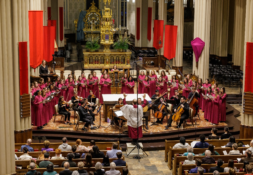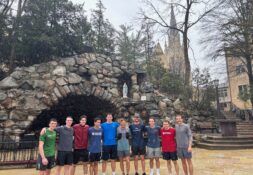Notre Dame’s School of Architecture is well known for its new urbanist tendencies, but I think what is more important is our unspoken credo that pretty much anywhere below the Arctic Circle can be made beautiful, comfortable, and prosperous; in short, a great place to live. To do so requires vision, and sensitive, informed development – but it can be done. Our endless outpouring of schemes for the revitalization of South Bend proves the pervasiveness of this confidence.
My last article set forth, as a goal for housing policy, to create beautiful, livable housing at all price points and levels of income. To achieve this, we need a working understanding of beauty. Or rather, why do we call something beautiful? Throughout diverse conversations, I have noted that Americans, when pressed to list beautiful things, will reveal a strong predilection for the natural. Most commonly associated with Jefferson, the ideal of beauty in rural life, apart from the din and filth of urban conditions, is deeply entrenched in the American consciousness. Unfortunately, it is a myth of the Enlightenment – that man, in his natural state, is perfected.
The assistant dean of the Notre Dame School of Architecture, Fr. Richard Bullene, once observed that there is no going back to the garden. Rather, God, in raising us from our fallen state, has prepared for us a different destination, the heavenly Jerusalem. I have stated previously in this column that Roman Catholicism is an urban religion. In fact, this is one of its more unique characteristics. This should not surprise us; though the Church is always engaged in missionary work, the full flowering of its role is not among the rural and dispersed. Though notable, they forever remain exceptions which strain the precepts of an urban rule. One might say that to urbanize is to Romanize.
It might seem that I am rejecting suburban living outright. It is indeed hard for me to come to such conclusions, having been raised in what, in hindsight, can only be described as a synthetic utopia. There was low crime, low unemployment, homelessness was nonexistent. Single family homes in sprawling subdivisions surrounded a university in the middle of nowhere.
Somewhere amongst the lush, immaculate lawns, there lurked a problem. The real point of failure is economic. A college town, my childhood home was effectively subsidized by 40,000 undergraduates spending their parents’ money from other cities as disposable income. The six home football weekends generate fully half of a local hotel’s annual profit. We lived in utopia because of a continuous influx of capital, and it took me a long time studying architecture to realize that my experience was not typical suburbia.
I generally associate universities with the Greek “polis” model rather than the Roman “urbis,” so I will take this opportunity to coin a more appropriate term for my hometown: HYPOPOLIS. A quick Google search of this term indicates that it has been used by a band, and also a radio show in Las Vegas, but that was intended to be a portmanteau of “hype” and “polis” rather than the prefix “hypo-.” I think it safe to say that I am the first to use the term to describe a zone of inhabitance below the density of a polis. The difference I wish to distinguish between a suburb and a hypopolis is that while a suburb derives its economic and cultural strength from an adjacent city, the hypopolis has an isolated cultural identity with external economic support.
In any event, my hometown, parasitic yet ideal, fails categorically as a model for development. It works as an exception but not as a rule. Like Attica in the Delian League, it reaps what it does not sow, and builds Parthenons to its own glory. At least the Greeks had the decency to use marble.
Getting back to the main point, the beauty of a suburb is ostensibly derived from a highly manicured and managed landscape. Unfortunately, the consequence of such neutered naturalism is a sublime, desensitizing sprawl. One glance at an aerial photograph immediately belies the fiction of natural beauty. Frankly, I sometimes think that what people really love about suburban living isn’t the nature, it’s the managing. It’s the pride in that perfectly mowed lawn and the freshly-painted picket fence. To really get that Norman Rockwell look, I suggest actually leaving the “wet paint” sign on the fence for weeks afterward, ensuring that all the other homeowners appreciate how diligent you are. I suspect there’s something vaguely Presbyterian in all this.
Matthew Balkey is a fifth-year architecture student. His Christmas decorations have already been up for a month. Matthew can be reached at mbalkey@nd.edu.





